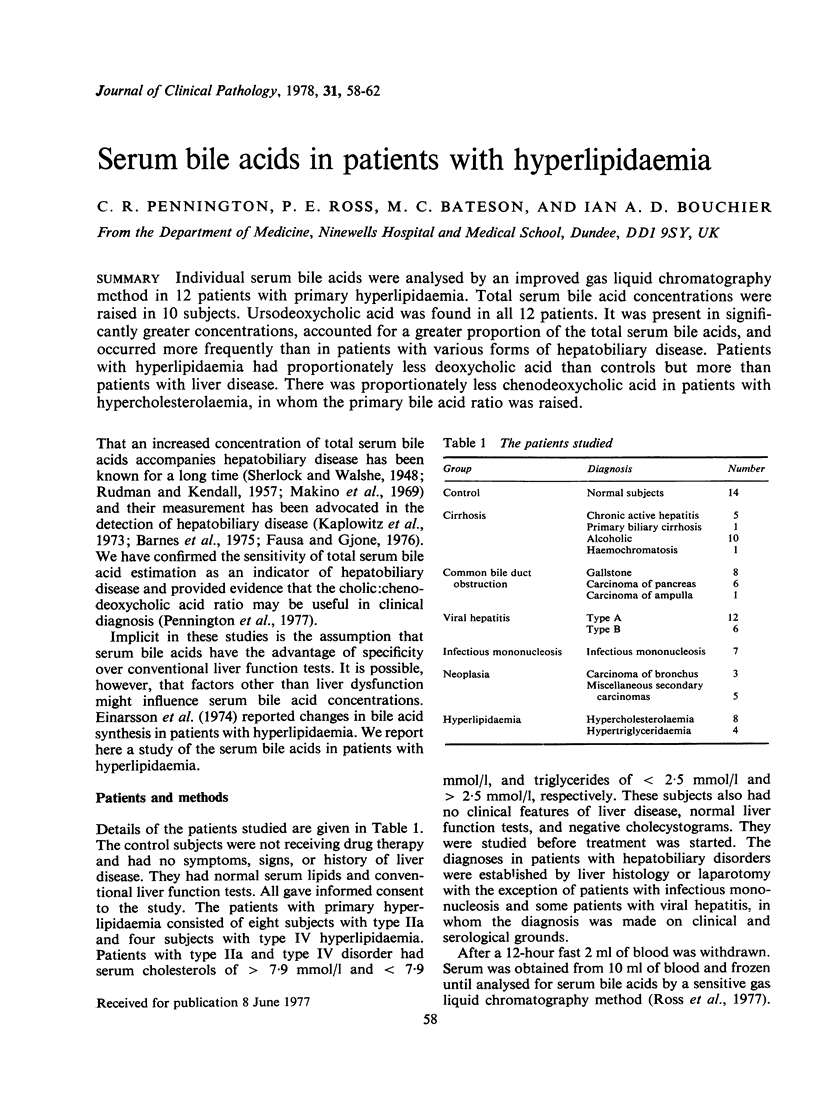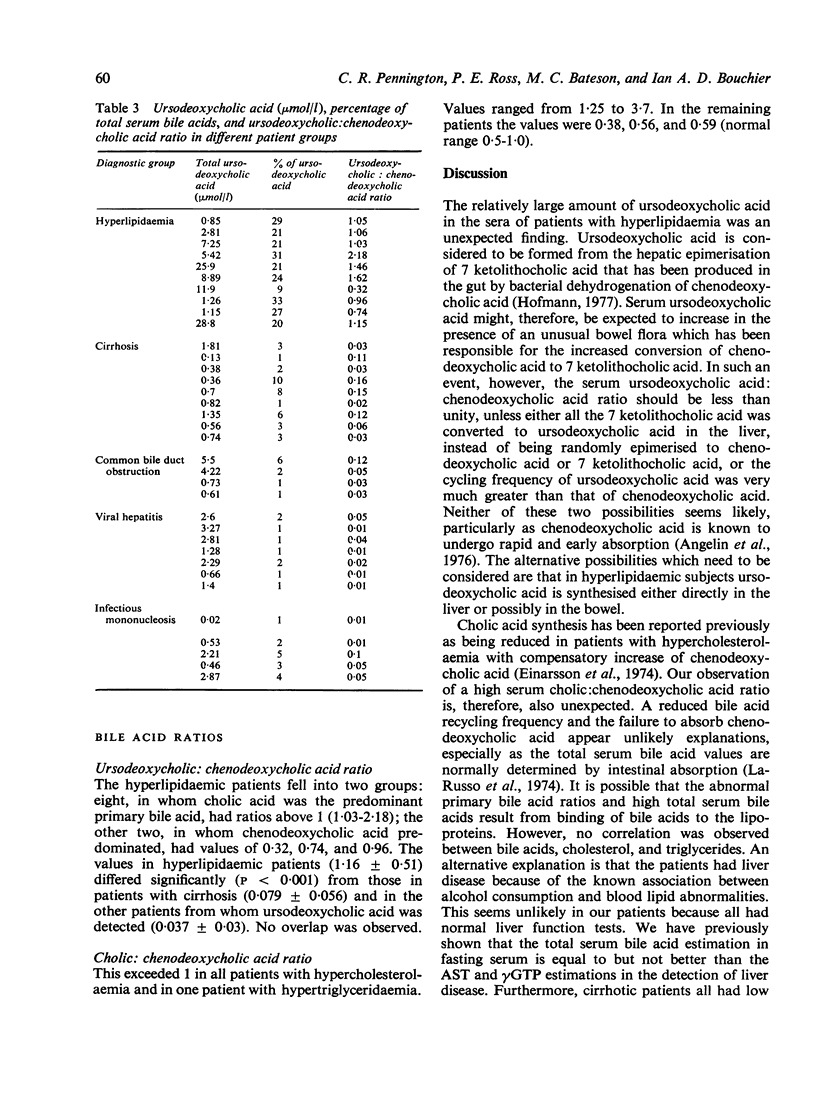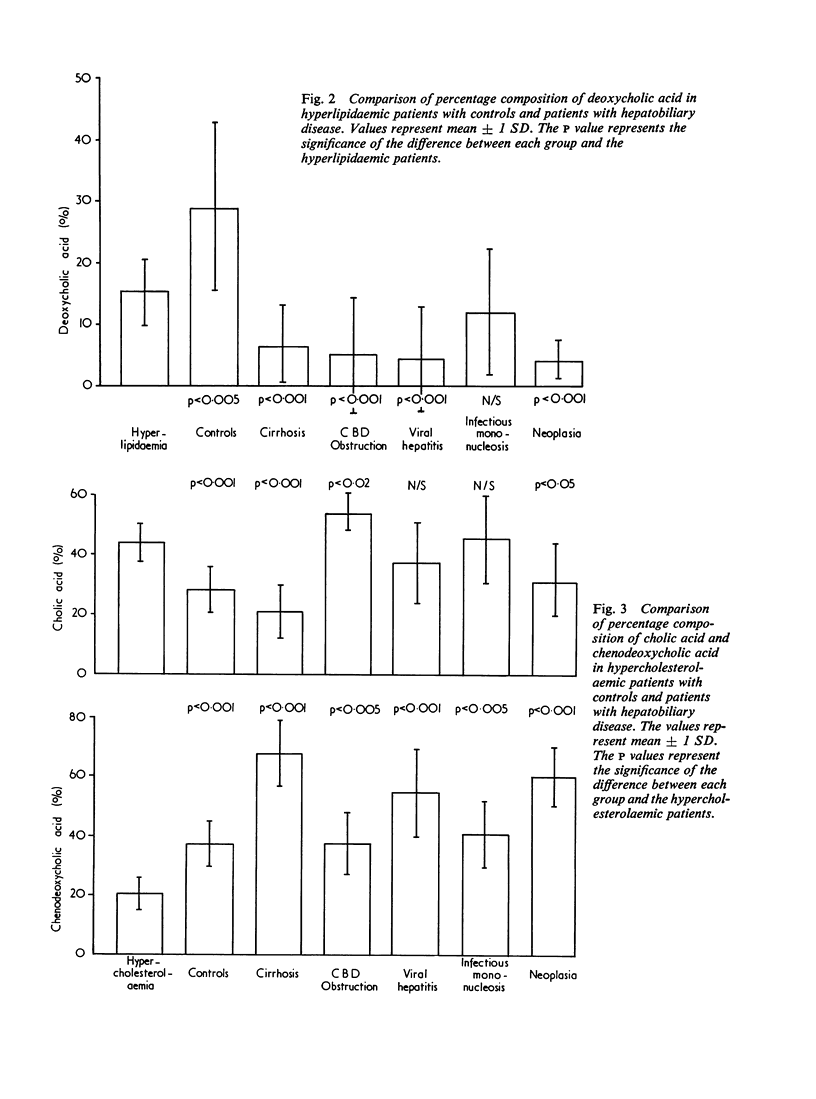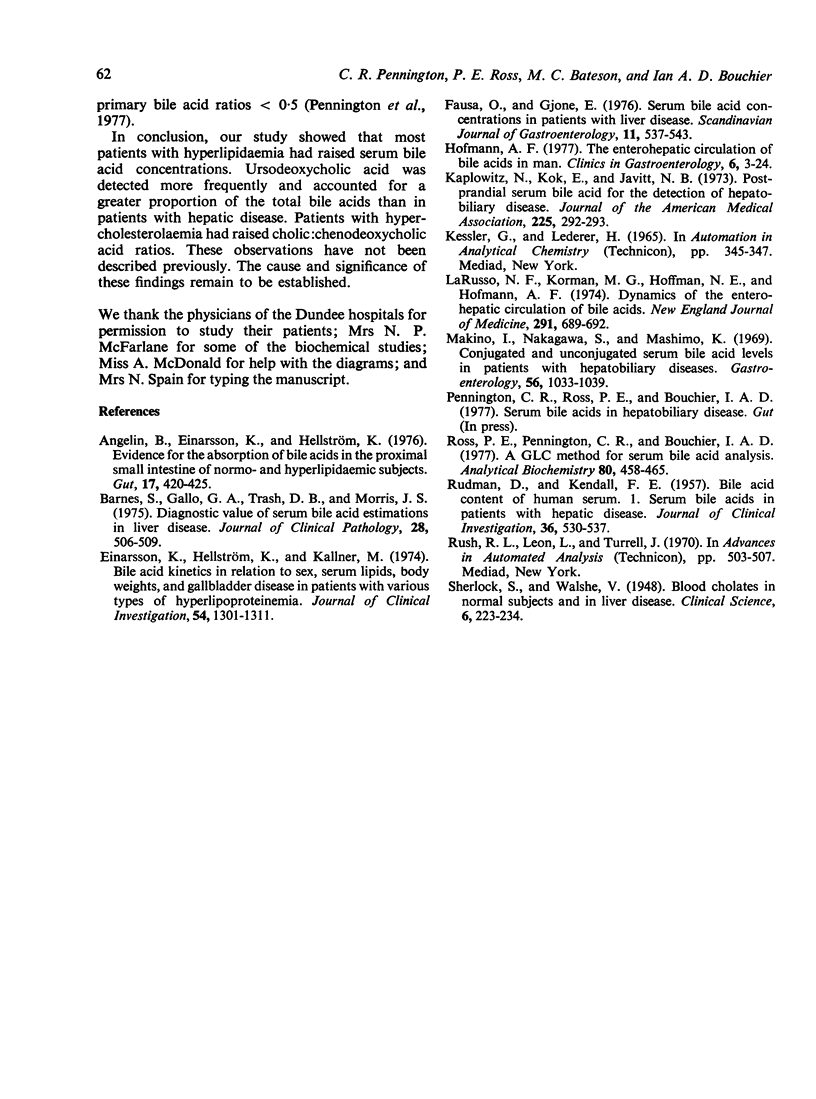Abstract
Individual serum bile acids were analysed by an improved gas liquid chromatography method in 12 patients with primary hyperlipidaemia. Total serum bile acid concentrations were raised in 10 subjects. Ursodeoxycholic acid was found in all 12 patients. It was present in significantly greater concentrations, accounted for a greater proportion of the total serum bile acids, and occurred more frequently than in patients with various forms of hepatobiliary disease. Patients with hyperlipidaemia had proportionately less deoxycholic acid than controls but more than patients with liver disease. There was proportionately less chenodeoxycholic acid in patients with hypercholesterolaemia, in whom the primary bile acid ratio was raised.
Full text
PDF




Selected References
These references are in PubMed. This may not be the complete list of references from this article.
- Angelin B., Einarsson K., Hellström K. Evidence for the absorption of bile acids in the proximal small intestine of normo- and hyperlipidaemic subjects. Gut. 1976 Jun;17(6):420–425. doi: 10.1136/gut.17.6.420. [DOI] [PMC free article] [PubMed] [Google Scholar]
- Barnes S., Gallo G. A., Trash D. B., Morris J. S. Diagnositic value of serum bile acid estimations in liver disease. J Clin Pathol. 1975 Jun;28(6):506–509. doi: 10.1136/jcp.28.6.506. [DOI] [PMC free article] [PubMed] [Google Scholar]
- Einarsson K., Hellström K., Kallner M. Bile acid kinetics in relation to sex, serum lipids, body weights, and gallbladder disease in patients with various types of hyperlipoproteinemia;. J Clin Invest. 1974 Dec;54(6):1301–1311. doi: 10.1172/JCI107876. [DOI] [PMC free article] [PubMed] [Google Scholar]
- Fausa O., Gjone E. Serum bile acid concentrations in patients with liver disease. Scand J Gastroenterol. 1976;11(5):537–543. [PubMed] [Google Scholar]
- Hofmann A. F. The enterohepatic circulation of bile acids in man. Clin Gastroenterol. 1977 Jan;6(1):3–24. [PubMed] [Google Scholar]
- Kaplowitz N., Kok E., Javitt N. B. Postprandial serum bile acid for the detection of hepatobiliary disease. JAMA. 1973 Jul 16;225(3):292–293. [PubMed] [Google Scholar]
- LaRusso N. F., Korman M. G., Hoffman N. E., Hofmann A. F. Dynamics of the enterohepatic circulation of bile acids. Postprandial serum concentrations of conjugates of cholic acid in health, cholecystectomized patients, and patients with bile acid malabsorption. N Engl J Med. 1974 Oct 3;291(14):689–692. doi: 10.1056/NEJM197410032911401. [DOI] [PubMed] [Google Scholar]
- Makino I., Nakagawa S., Mashimo K. Conjugated and unconjugated serum bile acid levels n patients with hepatobiliary diseases. Gastroenterology. 1969 Jun;56(6):1033–1039. [PubMed] [Google Scholar]
- RUDMAN D., KENDALL F. E. Bile acid content of human serum. I. Serum bile acids in patients with hepatic disease. J Clin Invest. 1957 Apr;36(4):530–537. doi: 10.1172/JCI103450. [DOI] [PMC free article] [PubMed] [Google Scholar]
- Ross P. E., Pennington C. R., Bouchier I. A. Gas-liquid chromatographic assay of serum bile acids. Anal Biochem. 1977 Jun;80(2):458–465. doi: 10.1016/0003-2697(77)90668-6. [DOI] [PubMed] [Google Scholar]


